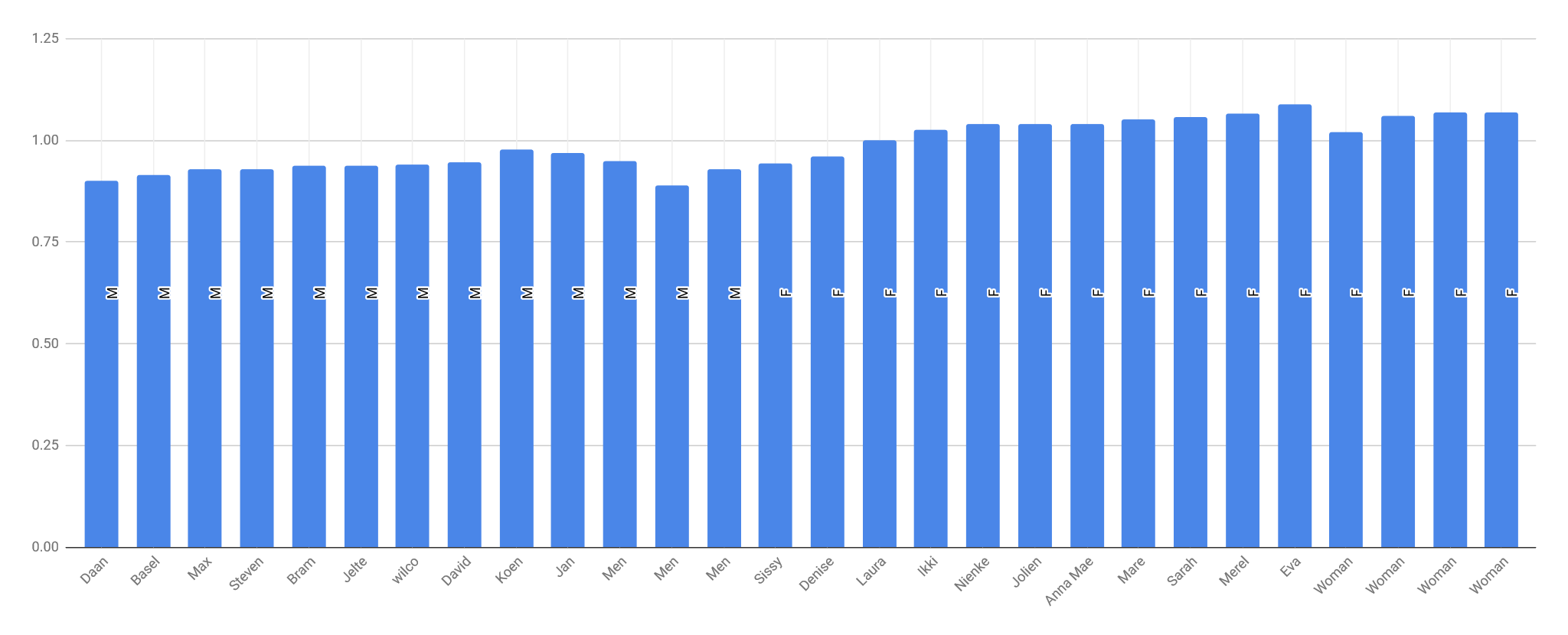Introduction
Like many other species, humans display the so-called sexual dimorphism: males and females possess dissimilar physical traits and characteristics. Some of these traits, such as facial structure, body shape, primary, and secondary sex characteristics, are straightforward; others, however, are more subtle. Bailey and Hurd (2005) report that digit ratio might be a reliable clue that is associated with prenatal exposure to high levels of testosterone or greater sensitivity to androgens. The present research investigates whether males, indeed, display higher length ratio between ring fingers and female fingers than females.
Methods

For this research, 28 students were recruited through the convenience sampling method; 15 (52%) of them were females, and the remaining 13 (48%) – males. As shown in Graph 1, the age characteristic of the sample was quite homogenous, with all the participants falling within the range between 20 and 21. Data collection was achieved by measuring the lengths of the second and fourth finger of each participant. Later, with the help of Excel software, the ratio between the measurements was calculated (see Table 1).
Table 1. Participants’ measurements.
Results

As seen from 2, ratios among men and women did not show much of variance across the board. However, upon closer look, one may notice that women’s ratios were slightly higher than those of men. In actuality, the lowest ratio (0.90) belongs to a male participant, while the highest ratio (1.09) belongs to a woman.
Discussion and Conclusion
The present research has shown to contradict the existing evidence on masculinity and femininity and its association with digit ratio. One caveat that should be pointed out is that the present research did not seek to measure hormone level in participants, which would have probably yielded deeper insights. Another limitation to be taken into account is the small number of participants (Cresswell & Cresswell, 2017). The results demonstrated that women were more likely to have longer ring fingers as compared to index fingers.
References
Bailey, A. & Hurd, P. (2005). Finger length ratio (2D:4D) correlates with physical aggression in men but not in women. Biological Psychology, 68(3), 215-222.
Creswell, J. W., & Creswell, J. D. (2017). Research design: Qualitative, quantitative, and mixed methods approaches. Thousand Oaks, CA: Sage publications.